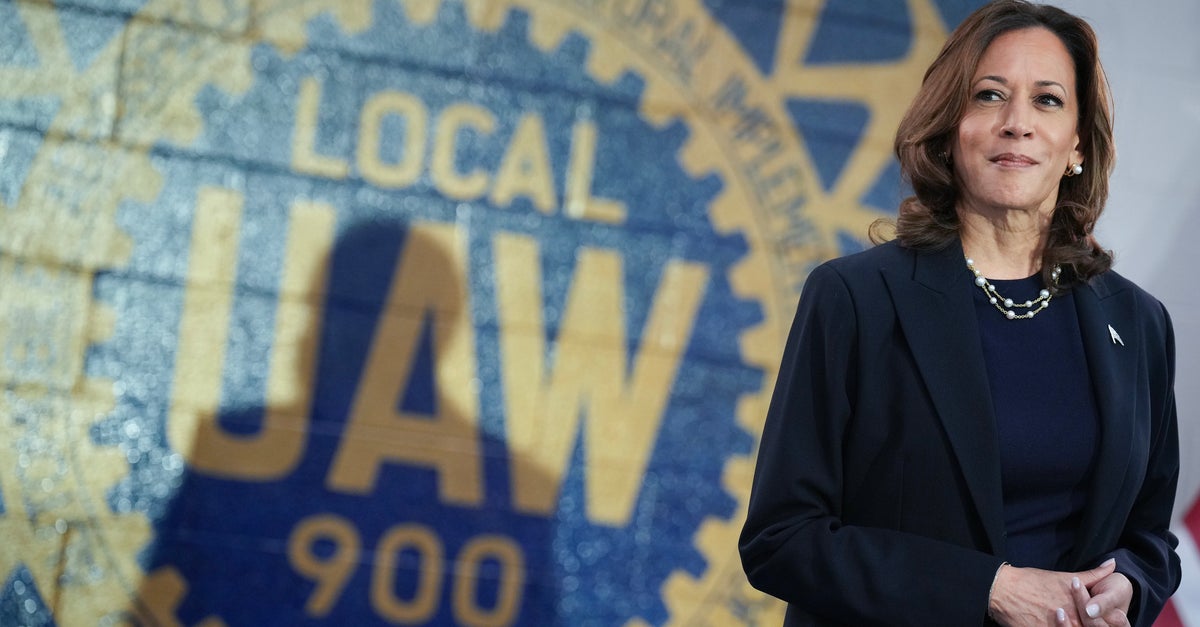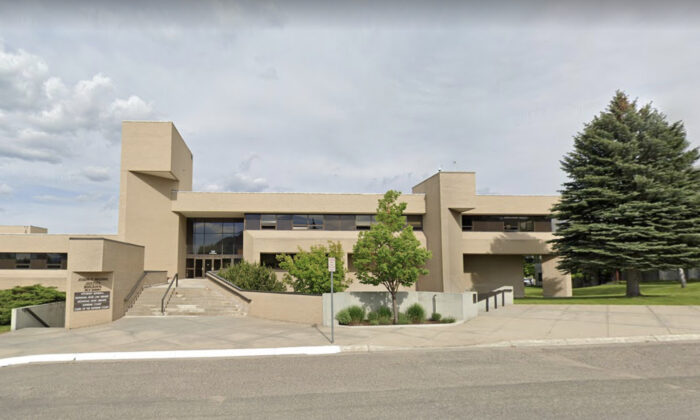
This article is part of HuffPost’s biweekly politics newsletter. Click here to subscribe . Republican vice presidential nominee JD Vance on Tuesday came to Green Charter Township, Michigan, a small rural community that has taken on big importance in the 2024 campaign.
A parcel of land along the township’s southern border is the site of a planned electric vehicle (EV) battery factory that has turned into an intense political battle, one which faithful HuffPost readers may remember from a lengthy feature last summer. The factory would bring an estimated 2,350 jobs to a region that has struggled economically because of the decline of American manufacturing. It’s one of literally dozens of such projects popping up in similar communities across the country as part of a clean energy boom that Democrats have helped to unleash ― most conspicuously by passing the Inflation Reduction Act, President Joe Biden’s signature legislative accomplishment.

That law subsidizes the manufacturing and purchasing of EVs. The prospect of these subsidies creating a bigger consumer market is a big reason why Gotion, the battery manufacturer, decided to build this particular plant. But the factory plans have provoked a furious local backlash.
A big focus of the factory’s critics ― and the one that seems to resonate most politically in this deeply red, heavily pro-Trump community ― is a claim that it will help Chinese interests because Gotion is the U.S. subsidiary of a Chinese EV company.
Vance picked up on this at Tuesday’s rally , telling supporters that “Kamala Harris not only wants to allow the Chinese Communist Party to build factories on American soil, she wants to pay them to do it with our tax money.” Vance’s visit to Green Charter Township came less than a week after Mike Rogers , a former congressman and current GOP Senate candidate, was there addressing supporters at the very same place. And it was just two days before GOP presidential nominee Donald Trump came to Michigan, for what was his third visit to the state in just nine days.
The former president was speaking outside of Lansing, the state capital, about a two-hour drive away. But he also used the occasion to attack the push for EVs, deploying arguments he’s unleashed many times before: that the Democrats are forcing automakers to make underperforming vehicles Americans won’t buy, bringing ruin down on the industry and its workers. “With this administration, they won’t even know what’s happening,” Trump said .
“They’ll take every single job of any autoworkers within two years, maybe three years. Nobody’s going to be making cars here.” The speech had the typically Trumpy mix of nonsense, hyperbole and outright falsehoods, as HuffPost’s S.
V. Date detailed afterward. Trump keeps saying auto industry jobs have declined under Biden, for example.
They’ve actually increased . Also, EVs outperform gas alternatives in all kinds of ways, including greater torque that makes them ― in the words of Car and Driver ― the “quickest-accelerating cars on the planet.” But it’s never been the accuracy or specificity of Trump’s arguments that wins over voters.
It’s the ability to convey through tone, language and framing that he’s on the side of the working class and that Democrats are not. Casting the EV push as left-wing elitists forcing everyday Americans to buy allegedly unappealing cars in order to save the planet, or weakening national security by supposedly allowing Chinese infiltration of the heartland ― these and related arguments are as much about identity and tribal loyalties as they are about the economic indicators. That kind of appeal worked well enough for Trump to get elected in 2016, and it could certainly work that well again.
Still, a series of recent developments suggests Democratic presidential nominee Kamala Harris may be able to stop that from happening ― not just by competing on facts, which comes second nature to Democrats, but also by competing on vibes, which in recent years they have found a lot more difficult. The Challenge And The Strategy The challenge could be even bigger for Harris, as a Black woman trying to win the trust of the white working-class voters who make up a disproportionate share of the electorates in the industrial Midwest. That group broke for Trump by 64% to 28% in 2016, according to Pew Research , then shifted to the Democrats by a few percentage points in 2020 ― enough, as it turned out, to help Biden flip all three Blue Wall states (Michigan, Pennsylvania and Wisconsin).
One sign that she’s thinking strategically is her selection of a running mate: Minnesota Gov. Tim Walz, the 24-year National Guard veteran and former public school teacher with a distinct Upper Midwest accent. A recent viral video in which Walz talks about rain gutters and shopping at Menards (a Midwest superstore) was probably good for 10,000 votes in Michigan alone.
Harris has also secured a strong endorsement from the United Auto Workers. The early August announcement came with a rousing speech from union President Shawn Fain and the release of a video highlighting Harris’ strong pro-labor record, including her 2019 turn on the picket line with striking autoworkers in Nevada. Harris is returning to Detroit on Monday as part of what her campaign has described as a Labor Day blitz .
Officials haven’t provided details on the visit, but it’s safe to assume it will lead to pictures of her alongside welders, pipe fitters and millwrights ― and more photo opportunities like that between now and Election Day. But maybe the most important asset Harris can bring to the campaign is an ability to combine those vibes with the actual facts, like how the EV push is helping the communities and people that Trump says it is harming. This was a big problem for Biden, who, in his now-infamous June 27 debate with Trump and countless sit-down interviews, struggled to conjure up facts on command and organize them into arguments.
Making arguments in public was literally Harris’ job as a prosecutor before she entered national politics. And she won’t have a problem finding evidence to make this case. Last year the U.
S. economy added 17,000 jobs in electric vehicle manufacturing, according to government figures, with projections suggesting many more are on the way . Meanwhile, employment in motor vehicle manufacturing of all kinds, not just electric, is now above 300,000 .
That’s the highest it’s been in 34 years . Plenty of voters are bound to doubt or dismiss those figures, along with the broader case Harris wants to make. That’s especially true for those voters already more inclined to trust Republicans because they associate Democrats with the elite intellectuals and corporate leaders who once promised free trade wouldn’t undermine American manufacturing .
But now Harris can cite yet another, potentially more trusted validator ― Republican lawmakers who don’t want the clean energy subsidies to go away because the new factories are in their districts. In an August letter to House Speaker Mike Johnson (R-La.), first reported in Politico E&E , 18 Republican representatives noted that “Energy tax credits have spurred innovation, incentivized investment, and created good jobs in many parts of the country ― including many districts represented by members of our conference.
” The 18 members are already getting attacked by right-wingers like Chip Roy , the Texas Republican congressman, who posted on X (formerly Twitter) that Republicans must “refuse to fund the climate corporate cronies destroying our country.” But the 18 are likely to find more allies, including among Republican officials from Southern states, such as Georgia , Kentucky and South Carolina, where the EV factory boom is creating what’s come to be known as the “ Battery Belt .” This phenomenon of a semi- or unpopular new Democratic initiative proving politically tough to dislodge isn’t new.
The same thing happened with the Affordable Care Act, aka Obamacare , which was a political albatross for Democrats until Republicans tried to take it away, threatening the coverage gained by millions who’d come to rely on it. Of course, the backlash materialized too late to stop Trump from winning a presidential election. Whether that happens again this year could depend on tiny shifts in voting patterns, which is why the campaigns are likely to keep giving so much attention to the Upper Midwest ― and maybe even to tiny Green Charter Township.
Related From Our Partner.














